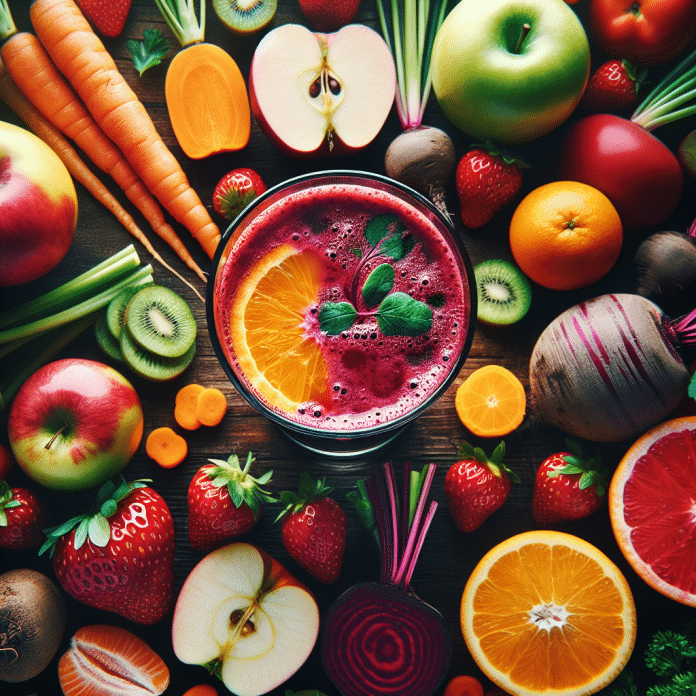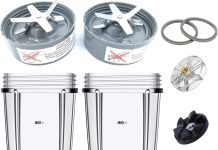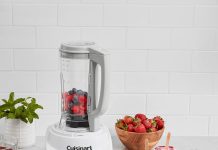Juicing has become increasingly popular in recent years as a convenient and tasty way to incorporate fruits and vegetables into your diet. But have you ever wondered whether it’s better to juice with or without the pulp? In this article, we will explore the pros and cons of both options and help you make an informed decision about which method is best for you. Whether you’re a juicing enthusiast or just curious about the benefits, we’ve got you covered. So grab a glass of your favorite juice and let’s dive into the world of juicing with and without the pulp. It’s time to find out what works best for you and your health goals.
Review contents
Juicing With the Pulp
Advantages of Including Pulp in Juicing
Juicing with the pulp offers a range of benefits that can enhance your overall health and well-being. One advantage of including pulp in juicing is its higher fiber content. Fiber plays a crucial role in our digestive system, helping to regulate bowel movements and promote a healthy gut. By incorporating pulp into your juice, you are effectively increasing your fiber intake, which can aid in digestion and promote a feeling of fullness.
Another advantage is improved digestive health. The pulp in fruits and vegetables contains a variety of enzymes and prebiotics that can support a healthy gut microbiome. These natural compounds help to nourish the beneficial bacteria in our intestines, promoting optimal digestion and nutrient absorption.
By including the pulp in your juicing routine, you also contribute to reduced waste. Juicing whole fruits and vegetables often results in leftover pulp, which can be repurposed for other culinary creations or composted to minimize environmental impact. It’s a sustainable way to make the most of your produce and reduce your carbon footprint.
In addition to the above benefits, juicing with the pulp enhances nutrient absorption. The fiber in the pulp slows down the release of sugars into the bloodstream, preventing sudden spikes in blood sugar levels. This allows for a more balanced nutrient uptake and helps maintain stable energy levels throughout the day.
Lastly, including pulp in your juices can also contribute to balanced blood sugar levels. The fiber in the pulp acts as a buffer, slowing down the absorption of sugars and preventing rapid fluctuations in blood sugar. This can be particularly beneficial for individuals with diabetes or those looking to manage their weight.
Disadvantages of Including Pulp in Juicing
While there are numerous advantages to including pulp in your juicing routine, it’s essential to consider the potential drawbacks as well.
One potential disadvantage is the textural consistency of the juice. Some individuals may find the presence of pulp in their juice unappealing due to its thicker and sometimes grainy texture. However, this can be easily overcome by experimenting with different juicing techniques or using different strains to achieve a smoother texture.
Another drawback is the potential accumulation of oxalates. Oxalates are naturally occurring compounds found in many fruits and vegetables that can contribute to the formation of kidney stones in susceptible individuals. Some individuals, especially those with a history of kidney stone formation or certain medical conditions, may need to limit their intake of oxalate-containing foods, which may include the pulp in juicing.
Another consideration is the speed of oxidation. When the pulp is included, the juice may oxidize more quickly, leading to a shorter shelf life. This can be mitigated by consuming the juice immediately after juicing or storing it properly in an airtight container in the refrigerator.
Additionally, some individuals may experience digestive strain when consuming juices with pulp. The fiber in the pulp can be difficult for some people to digest, leading to bloating, gas, or discomfort. It’s important to listen to your body and make adjustments as necessary to ensure optimal digestion.
Lastly, while rare, there is a possibility of allergenic reactions to certain components present in the pulp. If you have known allergies to specific fruits or vegetables, it’s important to exercise caution and consult with a healthcare professional before incorporating their pulp into your juices.
Juicing Without the Pulp
Benefits of Removing Pulp from Juicing
Juicing without the pulp can offer unique advantages that may appeal to certain individuals. One of the main benefits is increased nutrient concentration. When the pulp is removed, the resulting juice becomes more concentrated in nutrients, allowing for a highly efficient delivery of vitamins, minerals, and antioxidants to your body.
Another benefit is improved digestive ease. Without the presence of fiber-rich pulp, the juice is easier to digest, allowing your body to swiftly absorb the nutrients without exerting excessive energy towards digestion. This can be particularly beneficial for individuals with sensitive digestive systems or those recovering from certain medical conditions that require a lower-fiber diet.
Additionally, the removal of pulp can enhance the flavor of the juice. Many individuals prefer a smoother, less textured juice that highlights the natural sweetness or tanginess of the fruits and vegetables. By straining out the pulp, you can achieve a juice with a more refined taste that can be enjoyed by even the pickiest of palates.
Another advantage of juicing without the pulp is the quick nutrient absorption it provides. Without the fiber content, the nutrients are readily available for absorption into the bloodstream, allowing for rapid delivery of these essential compounds to your body’s cells.
For individuals with certain medical conditions that require a low-fiber diet, such as Crohn’s disease or ulcerative colitis, juicing without the pulp can provide easier digestion and fewer symptoms.
Drawbacks of Removing Pulp from Juicing
While juicing without the pulp can be beneficial for some individuals, there are a few drawbacks to consider as well.
One notable disadvantage is the reduced fiber content. Fiber plays a crucial role in regulating bowel movements and promoting a healthy gut. By removing the pulp, you are effectively eliminating the fiber content, which can lead to a decreased intake of this essential nutrient.
Another consideration is the potential waste. When you remove the pulp from juicing, you are left with an excess amount of fruit and vegetable fiber. While this can be composted or repurposed for other culinary uses, it’s important to be mindful of potential food waste and find creative ways to utilize the remaining pulp.
Additionally, removing the pulp from juicing can impact blood sugar levels. Without the buffer of fiber, the sugars from the fruits and vegetables may be absorbed more quickly into the bloodstream, potentially leading to imbalances in blood sugar levels. This is especially important for individuals with diabetes or those monitoring their sugar intake.
Moreover, the removal of pulp can result in a loss of antioxidants. Many fruits and vegetables contain valuable antioxidants in their skins or fibrous parts, which may be lost when straining out the pulp. Antioxidants play a crucial role in neutralizing harmful free radicals and promoting overall health and wellbeing.
Lastly, the lack of satiety can be a potential drawback. The fiber in the pulp helps promote a feeling of fullness and satisfaction after consuming a juice. By removing the pulp, you may not experience the same level of satiety, potentially leading to increased snacking or overeating.
Factors to Consider
When deciding whether to juice with or without the pulp, there are several factors to consider:
Personal Health Goals
Your individual health goals play a significant role in determining whether to include or remove the pulp in your juices. If you are looking to increase your fiber intake or promote digestive health, juicing with the pulp may be more suitable. However, if you are aiming for quick nutrient absorption or have specific dietary restrictions, juicing without the pulp may be preferred.
Digestive System Sensitivity
If you have a sensitive digestive system, paying attention to how your body reacts to juices with or without pulp is essential. Some individuals may find that juices without the pulp are easier to digest and cause fewer digestive issues, while others may benefit from the added fiber content and improved gut health by including the pulp.
Nutrient Requirements
Consider your specific nutrient requirements when deciding whether to include or remove the pulp in your juices. If you are focused on maximizing nutrient concentration or have specific dietary needs, juicing without the pulp may be more beneficial. However, if you prioritize overall fiber intake or want to consume a wider variety of nutrients from fruits and vegetables, juicing with the pulp can be advantageous.
Sugar Intake
Monitoring your sugar intake is crucial, especially for individuals with diabetes or those looking to manage their weight. For those concerned about blood sugar levels, juicing with the pulp may be a better option since the fiber can help balance sugar absorption. However, if you are carefully measuring your sugar intake, juicing without the pulp may allow for more precise control.
Pre-existing Medical Conditions
If you have any pre-existing medical conditions, it’s important to consult with a healthcare professional before deciding on whether to juice with or without the pulp. Certain conditions, such as kidney stones or gastrointestinal disorders, may necessitate specific dietary modifications, including the inclusion or exclusion of pulp in juices.
Juicer Options
There are several types of juicers available in the market, each with its unique features and capabilities. Understanding the different options can help you choose the best juicer for your needs.
Centrifugal Juicers
Centrifugal juicers are the most common type of juicer found in households. These juicers feature a fast-spinning blade that shreds the fruits and vegetables, separating the juice from the pulp. They tend to be more affordable and convenient, making them a popular choice for beginners or those on a budget. However, they may yield less juice, produce more foam, and may not be as efficient at extracting juice from leafy greens.
Masticating Juicers
Masticating juicers, also known as slow juicers or cold press juicers, work by utilizing an auger that slowly crushes the produce, extracting the juice. These juicers operate at a slower speed, which helps preserve more nutrients and enzymes while minimizing oxidation. They are highly effective in juicing various fruits and vegetables, including leafy greens. Masticating juicers tend to be more expensive but offer higher juice yields and a longer shelf life due to reduced oxidation.
Triturating Juicers
Triturating juicers, also known as twin gear juicers, are high-end juicers that use two interlocking gears to crush and extract juice from produce. They work at an even slower speed than masticating juicers, resulting in even higher nutrient retention. Triturating juicers are particularly suitable for juicing tough and fibrous fruits and vegetables. However, they are more expensive and require more time and effort for maintenance and cleaning.
Choosing the right juicer depends on your specific needs, budget, and desired juicing outcomes. Consider the type of produce you plan to juice, the quantity of juice you intend to make, and your overall juicing preferences when selecting a juicer.
Tips for Juicing With the Pulp
If you decide to juice with the pulp, here are some helpful tips to ensure a more enjoyable juicing experience:
Choose Organic Produce
When including the pulp, it’s important to select organic fruits and vegetables whenever possible. Pesticide residues and other harmful substances are more likely to accumulate in the pulp, leading to potential health risks. Opting for organic produce reduces your exposure to these toxins and ensures a safer and healthier juice.
Balance Fiber and Liquid
Achieving the right balance between fiber and liquid is crucial for a well-textured juice. Too much pulp can result in a thick and clumpy juice, while too little pulp may lack the desired fiber content. Experiment with different ratios until you find the perfect balance that suits your taste and texture preferences.
Experiment with Texture
If you find the texture of the juice with pulp unappealing, don’t be discouraged. There are numerous ways to modify the texture to suit your preferences. You can blend the juice with ice or add a splash of filtered water to achieve a lighter and smoother consistency. Additionally, blending the juice with other ingredients such as avocado or nut milk can create a creamy and more indulgent texture.
Use Different Juicing Techniques
Different juicing techniques can also alter the texture and overall experience of the juice. Try using a blender or a food processor instead of a juicer. These appliances allow you to incorporate the whole fruit or vegetable, resulting in a thicker and more satisfying drink. You can strain the juice afterward to remove any large particles or simply enjoy the full pulp experience.
Tips for Juicing Without the Pulp
If you prefer juicing without the pulp, here are some tips to ensure the best results:
Strain the Juice
To remove the pulp from your juice, use a fine-mesh strainer or cheesecloth. This will help catch any leftover pulp while allowing the smooth juice to pass through. Experiment with different straining methods to find the one that works best for you in terms of convenience and desired texture.
Use Nut Milk Bags or Cheesecloth
Nut milk bags or cheesecloth can provide a finer straining experience, ensuring that minimal pulp remains in the juice. These bags allow for thorough extraction while effectively separating the juice from the fiber. They are especially useful when juicing small seeds or berries that tend to have more residual pulp.
Try Different Straining Methods
Straining your juice doesn’t have to be a one-size-fits-all approach. Depending on your preference, you can use different straining techniques to achieve varying levels of pulp removal. Some individuals prefer a juice with a bit of texture, while others desire a completely smooth result. Don’t be afraid to experiment and find the method that suits your taste and desired consistency.
Reuse or Recycle the Pulp
Instead of discarding the leftover pulp, there are various ways to repurpose it. The pulp can be used to create delicious and nutritious additions to your meals, such as adding it to soups, stews, or sauces for extra fiber and flavor. You can also incorporate it into baked goods, smoothies, or homemade veggie burgers. Additionally, the pulp can be composted to enrich your garden or used as animal feed, minimizing waste and maximizing sustainability.
Conclusion
Juicing with or without the pulp is a matter of personal preference and individual health considerations. Both approaches have their advantages and drawbacks that should be carefully considered to align with your goals and needs.
If you choose to juice with the pulp, you can benefit from the higher fiber content, improved digestive health, reduced waste, enhanced nutrient absorption, and balanced blood sugar levels. However, you may need to overcome the textural consistency, potential oxalate accumulation, speed of oxidation, digestive strain, and possible allergenic reactions that can arise.
On the other hand, juicing without the pulp offers benefits such as increased nutrient concentration, improved digestive ease, enhanced flavor, quick nutrient absorption, and easier digestion for some medical conditions. However, you may experience reduced fiber content, potential waste, blood sugar imbalance, loss of antioxidants, and lack of satiety.
To make an informed decision, consider factors such as personal health goals, digestive system sensitivity, nutrient requirements, sugar intake, and any pre-existing medical conditions. Additionally, explore the different juicer options available, such as centrifugal, masticating, or triturating juicers, to find the one that best suits your needs.
Regardless of whether you choose to juice with or without the pulp, remember that individual preferences vary, and experimentation and flexibility are key. Ultimately, the goal is to enjoy the process of juicing while nourishing your body with the goodness of fruits and vegetables.































